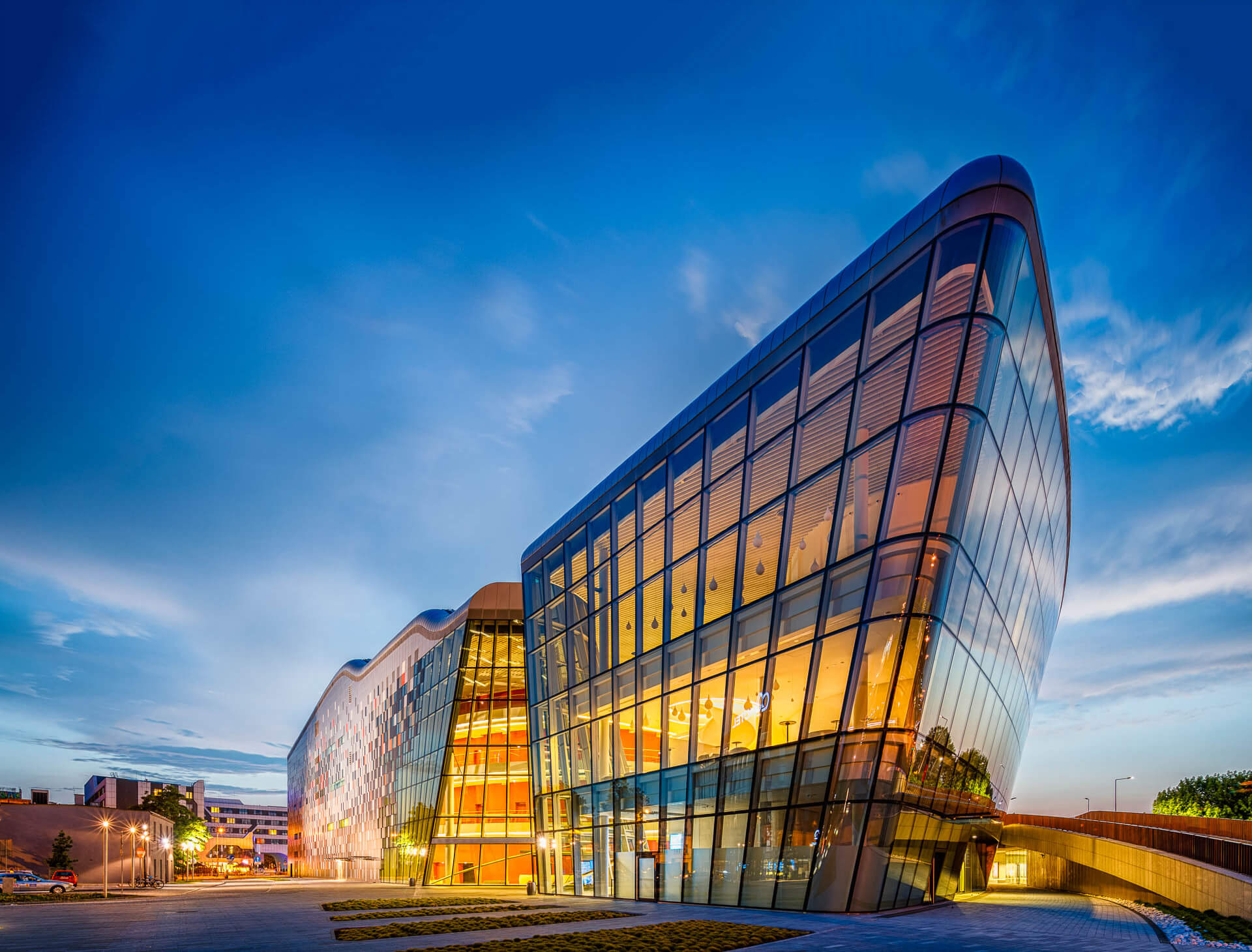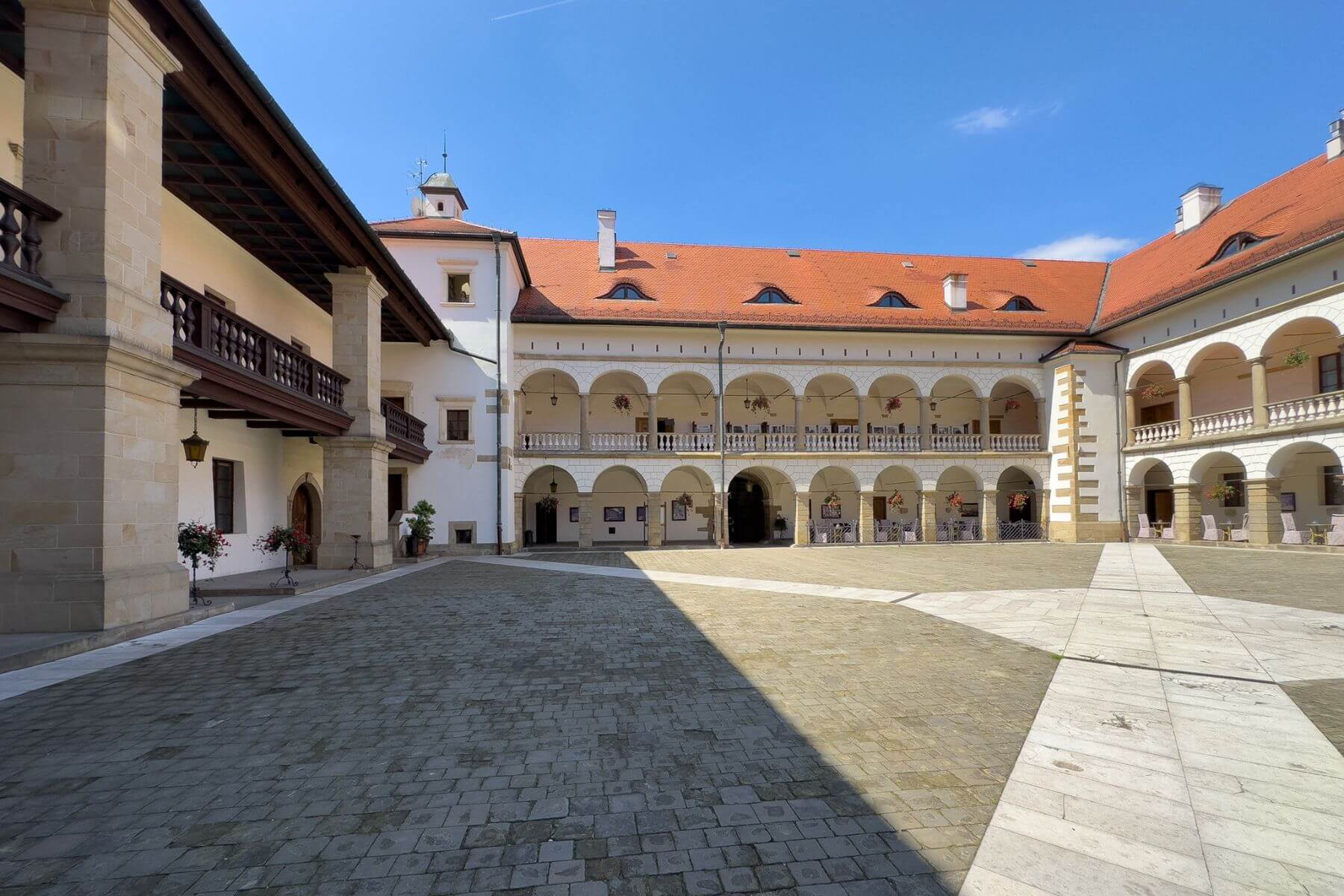ICE Kraków Congress Centre
ul. Marii Konopnickiej 17, 30-302 Kraków
The ICE Kraków Congress Centre is the business and cultural flagship of the city. Located in the very heart of Kraków, it is a convenient place for the organisation of diverse events: from international congresses, conferences, symposiums and business meetings, through cultural events such as concerts, opera, theatrical and ballet performances, to social meetings.
The ICE Kraków Congress Centre is a state-of-the-art, multifunctional venue in the very heart of Kraków. It has been described as the finest setting hosting business and cultural events in Małopolska since 2014.
The well-connected venue has four main halls: the Auditorium (capacity 1915), the Theatre Hall (capacity 600), the Chamber Hall (capacity 300) and the Conference Room Complex (capacity 400). ICE Kraków also has extensive infrastructure and boasts a glazed, three-storey foyer offering stunning views over Wawel Castle, the Vistula River and the Kazimierz district, providing comfortable space for a total 3200 visitors to myriad events.
ICE Kraków is well-suited to hosting business meetings such as congresses, conferences, corporate events and product launches, as well as cultural events including festivals, concerts, spectacles, galas, exhibitions and community projects.
The ICE Kraków Congress Centre is located in the very heart of Krakow, opposite the Wawel Castle, next to one of the main transport hubs.

The Niepołomice Royal Castle
ul. Zamkowa 2, 32-005 Niepołomice
For centuries, the Castle in Niepołomice, known as the "second Wawel", was a place of rest and work for kings and princes from the Piast and Jagiellon dynasties, as well as elective rulers of the Polish-Lithuanian Commonwealth. It was also supposed to play a defensive role. Royal hunts to the Niepołomice Forest set off from here. It was built during the reign of King Casimir the Great.
Based on a quadrilateral plan, with a spacious square-shaped arcaded courtyard and cloisters, the Castle is a gem of Renaissance architecture. At the same time, it is proof of the extraordinary craftsmanship of Tomasz Grzymała and the Italian sculptor Santi Gucci, who contributed most to the present appearance of the Castle. The work they did was carried out in 1551-1568 during the reign of King Sigismund II Augustus. The only significant change was the reconstruction of the cloisters into early Baroque design in later years (1635-1637). The fate of the Castle is closely connected with Polish history. The end of the building’s splendour came with the Swedish Deluge, when a food warehouse was set up here. Attempts at renovation failed, and it was turned into barracks and partly demolished after the first partition of Poland in 1772, when the Castle came under the rule of the Austrian monarchy. Later, it was used as warehouses and flats. After World War II, it began to fall into ruin. Only when the Castle came under the care of the Niepołomice municipality in 1991 did its reconstruction and renovation begin. At present, the Royal Castle in Niepołomice houses the Niepołomice Museum, restaurant and a conference centre.
Forty Kleparz
ul. Kamienna 2/4, 30-001 Kraków

"Forty Kleparz" is part of the nineteenth century walls, fortress, preserved in almost perfect condition. All the buildings are Fort Kleparski (Bastion III Kleparz), built between 1856-1859. One of the advantages is its interior - the traditional nineteenth-century fortifications successfully exploited in a modern and elegant way, like the finest of its kind in the world.
We strive to create a creative space with a cultural, business and entertainment character. We started with the club, creating a recognizable brand that is associated with excellent music and the biggest stars of the Polish music scene for Cracovians. Now we are sharing the effect of work on the second stage of our plan. We offer a year-round restobar serving world cuisine, a summer part of the restaurant - an orangery, a lounge bar - a relaxation zone in the restored part between the rampart and the redita of the fort - and a summer stage where concerts and events take place. In September, we will open further parts of our complex: a banquet and exhibition hall, a museum room dedicated to the topic of fortifications and a historical path located on the outer embankment. In the future, the concert courtyard will be covered with a roof, thanks to which a banquet and concert hall will be created, which will accommodate 3,000 people.
TAXI
We recommend getting to the venues via taxis.
